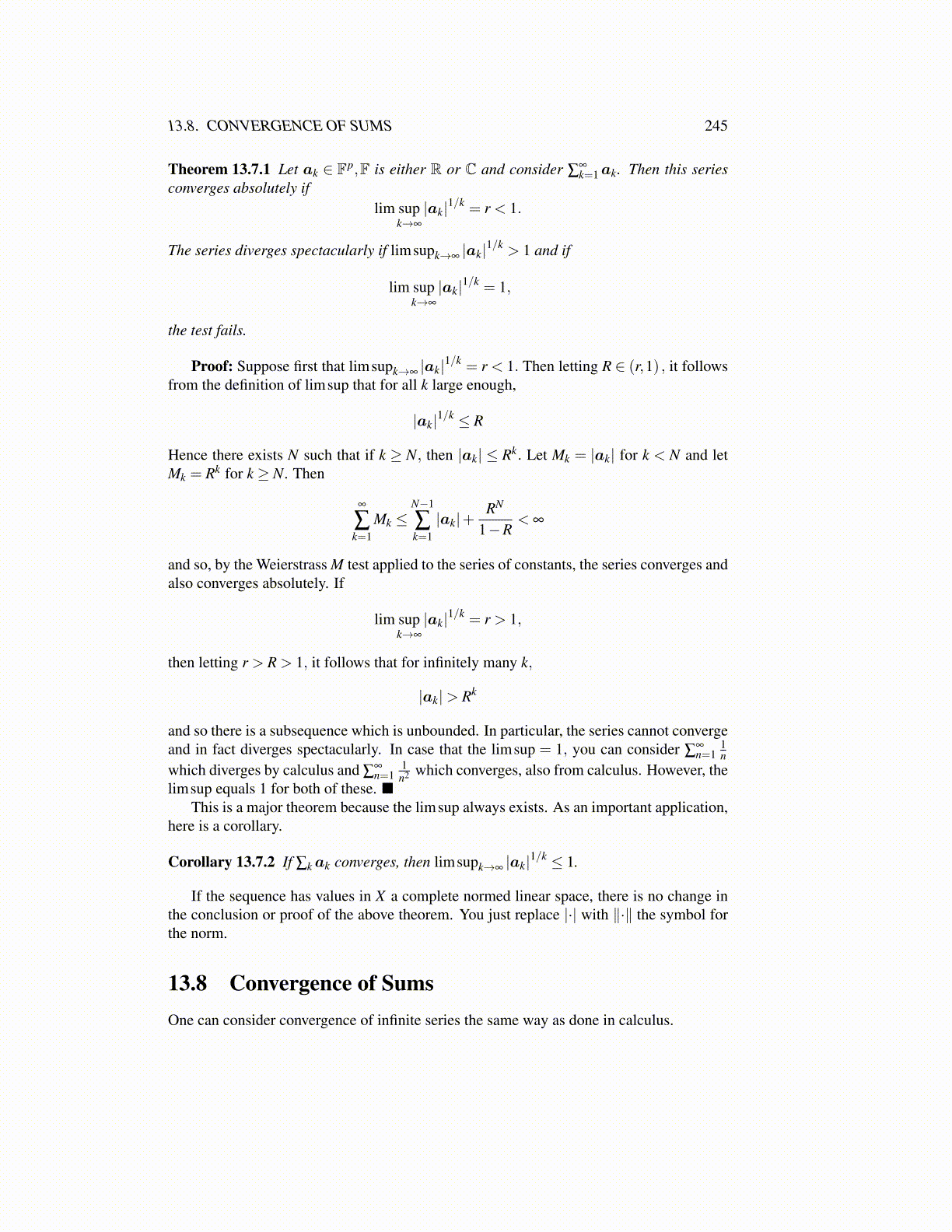
13.8. CONVERGENCE OF SUMS 245
Theorem 13.7.1 Let ak ∈ Fp,F is either R or C and consider ∑∞k=1ak. Then this series
converges absolutely iflim sup
k→∞
|ak|1/k = r < 1.
The series diverges spectacularly if limsupk→∞ |ak|1/k > 1 and if
lim supk→∞
|ak|1/k = 1,
the test fails.
Proof: Suppose first that limsupk→∞ |ak|1/k = r < 1. Then letting R ∈ (r,1) , it followsfrom the definition of limsup that for all k large enough,
|ak|1/k ≤ R
Hence there exists N such that if k ≥ N, then |ak| ≤ Rk. Let Mk = |ak| for k < N and letMk = Rk for k ≥ N. Then
∞
∑k=1
Mk ≤N−1
∑k=1|ak|+
RN
1−R< ∞
and so, by the Weierstrass M test applied to the series of constants, the series converges andalso converges absolutely. If
lim supk→∞
|ak|1/k = r > 1,
then letting r > R > 1, it follows that for infinitely many k,
|ak|> Rk
and so there is a subsequence which is unbounded. In particular, the series cannot convergeand in fact diverges spectacularly. In case that the limsup = 1, you can consider ∑
∞n=1
1n
which diverges by calculus and ∑∞n=1
1n2 which converges, also from calculus. However, the
limsup equals 1 for both of these. ■This is a major theorem because the limsup always exists. As an important application,
here is a corollary.
Corollary 13.7.2 If ∑k ak converges, then limsupk→∞ |ak|1/k ≤ 1.
If the sequence has values in X a complete normed linear space, there is no change inthe conclusion or proof of the above theorem. You just replace |·| with ∥·∥ the symbol forthe norm.
13.8 Convergence of SumsOne can consider convergence of infinite series the same way as done in calculus.